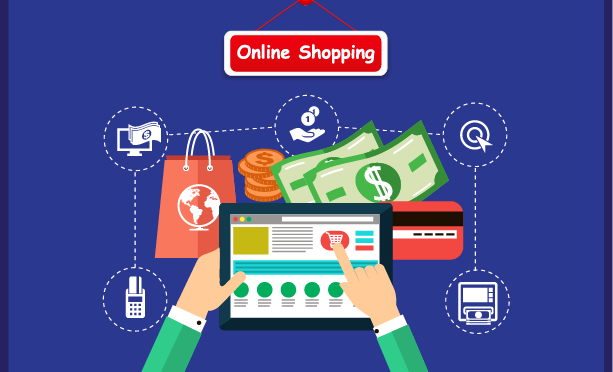Retail Mobility – Welcoming the consumer on mobile
The retail industry has witnessed a massive change in the recent years. While the internet revolution of the last decade enabled shopping anytime, anywhere; the mobile revolution led by smartphones and applications propelled on-the-go shopping and made a radical shift in the way brands, consumers and retailers interact with each other. As consumers use mobile devices and apps to research, browse, compare and shop, mobility solutions are poised to become a significant business channel in retail.
Retailers too are realizing this and hence are adopting mobile, quite enthusiastically, resulting in Tablet catalogs, mobile billings, mCoupons, mobile apps and much more. The growing surge in mobility usage,both at the consumer and the retailer’s end makes for a riveting case study. Our cover story, this month, focuses on retail mobile solutions and endeavors to decipher the reasons behind retailers taking the mobile plunge, the seismic shift in the consumer behavior, the growth engines behind retail mobility, opportunities, challenges and advantages for various stakeholders and a look into the days ahead.
The Seismic Shift
Walk into a store, search for the product, compare between various brand choices, pay the bill and walk-out with the desired item in your bag. A few years back, it used to be the only way to shop. The advent of e-commerce made a major shift in the way people shop; allowing consumers to shop from anywhere, sitting in-front of their computer and without leaving their work or home, dismantling all the boundaries and giving them access to a global marketplace.
Online retailers, armed with a new, low-cost business model created a competitive marketplace giving a run-for- money to their brick and mortar counterparts. The arrival of mobile devices, the transformation from feature phones to smartphones, the arrival of Tablets and a galore of applications simply changed the order. Starting with SMS advertising to mobile websites and then to exclusive apps for branding and retailing, m-commerce brought a sea-change to the consumer shopping, in-sync with the new mobile lifestyle. Today, using advanced mobile applications, retailers have a direct communication channel to interact with their target audience, inform and convince them about products and influence their decision making.
Research shows that mobility is slowly gaining traction in retail. In United States, mobile commerce is predicted to generate more than $31 billion (from $3 billion in 2010) in sales making for over 7 percent (from just 1% in 2010) of all e-commerce sales in 2016. The mobile retail channel is swiftly moving from being an alternate communication channel to being a primary channel for interaction with consumers.
The Engines
Several factors are at play to drive the mobile retail boom. Mobile devices (smartphones and later-on Tablets) and applications have become part of a shopper’s life. With today’s shoppers embracing mobility as a way of life, retailers have no choice but to sync their strategy with the changing mindset.
Mobile apps allow retailers to make their interactions with the consumers, engaging and responsive, creating an appealing brand impression and occupying mind space of the prospective buyers. Moreover, retailers are adapting to mobility solutions buoyed by other business factors as well. The competitive retail marketplace and recent economic downturn has compelled retailers to look for low-cost, agile and innovative solutions that provide them with broader and faster reach-to-the market. Mobility solutions, when integrated with the existing ecosystem, can also play a big role in accentuating the shopping experience. A product demonstration on a tablet or price-comparison with a scan of the product not only helps to shorten the buying cycle but also helps the consumers take informed decisions.
The Opportunities for retailers
Today, mobility in retail has not only become a vital channel for branding and advertising but also is an enabler that can act as a force multiplier, in near and long-term future, to the overall operations in a retail organization.
Retail mobility solutions are making processes leaner and swifter not only with their own capacity but by also complementing other technologies. In short, mobility is creating new possibilities for retailers to manage their stores and make shopping effortless and pleasurable. From helping their consumer locate their nearest stores, to browsing catalogues on-the-go to read reviews of products and compare prices, retail mobility solutions have the power to integrate various components of the buying cycle into a seamless and fun exercise.
The big gains
One of the key factors behind the huge enthusiasm within retailers to adopt mobility is the game-changing business benefits it brings to them. Studies show that mobile applications not only play a huge influencing role in creating positive brand image outside the organization but also boosts worker productivity within the enterprise,thus decreasing asset failures, reducing operational costs and improve real-time decision making to help organizations improve their processes and potential.
Research also shows that by adopting retail mobility solutions, business can get a major lift in their various activities and make it more effective, culminating to significant financial benefits. A CISCO IBSG survey in 2011 shows that mobility adoption could bring as high as 10% boost to net margins for retailers.
Challenges & Advantages
While there are many exciting reasons for retailers to adopt mobility the path however is not so smooth. There are several critical challenges facing the retailers as they move on to leverage mobility in their business. Device diversity- with the availability of varied devices- and platform fragmentation- with multiple mobile platforms- brings up the challenge to look for solutions that can fit all. Internet connectivity and bandwidth concern can be a huge block in reaching to a vast audience in certain geographic markets. Privacy of customer is also a growing concern that has to be adequately addressed. It is also important for retailers to keep an eye on the reliability and scalability of their mobile infrastructure as the usage grows (in peak shopping seasons and times). And, above all, there is a huge challenge in rising and meeting up-to the consumer demands and making shopping via mobile a hassle-free and engaging activity.
Looking ahead
The future for retail mobility looks very exciting. As mobile devices evolve further, new technologies emerge and adoption grows and a lot of such innovation in the ways mobile technology will be leveraged in the retail businesses will be seen. Already there are talks of virtual shopping malls owned and managed by multiple retailers. Other key innovations that are most talked about and are gaining traction in recent times are the Near Field Communications (NFC) and Augmented Reality (AR).
Near Field Communications: NFC will allow shoppers to simply wave their phone to a tagged item in a store shelf, and get all the information about the product like prices, reviews, availability and even download discount coupons. NFC will also allow them to make payments via their mobile and also redeem reward cards.
Augmented Reality: AR is another technology, in use in its introductory phase, which when further evolved will change the shopping experience. AR will enable consumers get live view of a particular product, say how a particular garment will look on them or how painting a particular color will affect the ambience. In the days ahead, as retail mobility matures, there will be countless possibilities for its use.
Our Recommendations
Embrace mobility: Retail mobility is the future. And offers tremendous value to both, retailers and shoppers.
Engage with your customers: Mobility brings tremendous opportunities to engage and be responsive to consumer needs.
Focus on consumer experience: Create a smooth, user-friendly and enjoyable mobile shopping environment. Allow consumers to interact with your brands using techniques like Gamification etc.
Pick the right platform: Diversity in screen sizes, functionalities and operating system necessitates businesses to adopt a multi-platform approach.
Keep an eye on analytics: Monitor consumer behaviour. Customer intelligence will be the guide for future.
Lay down the groundwork for next generation of retail mobility: Emerging technologies like Augmented Reality, NFC, RFID etc., promises more opportunities. Be ready to seize them.
Final Thoughts
Retailers have to explore and adopt solutions that can help them reach their target audience, inform and influence their buying-decision process. Shoppers, on the other hand, would want the retailers to provide them with tools and solutions that play a role in their shopping decisions. Retail mobility solutions have emerged as an effective answer to myriad challenges facing retailers and will empower them to respond swiftly to the changing market dynamics and consumer lifestyle. However, right solutions beget expected results when employed at the right time. The time is ripe to go mobile. A revisit to the recent history exemplifies how early movers in e-commerce benefitted while laggards were found catching-up. A new model of retailing is emerging. It’s time to embrace it with full hands!
![Blog-[x]cube LABS](https://d6fiz9tmzg8gn.cloudfront.net/wp-content/uploads/2016/06/blog_banner.jpg)




